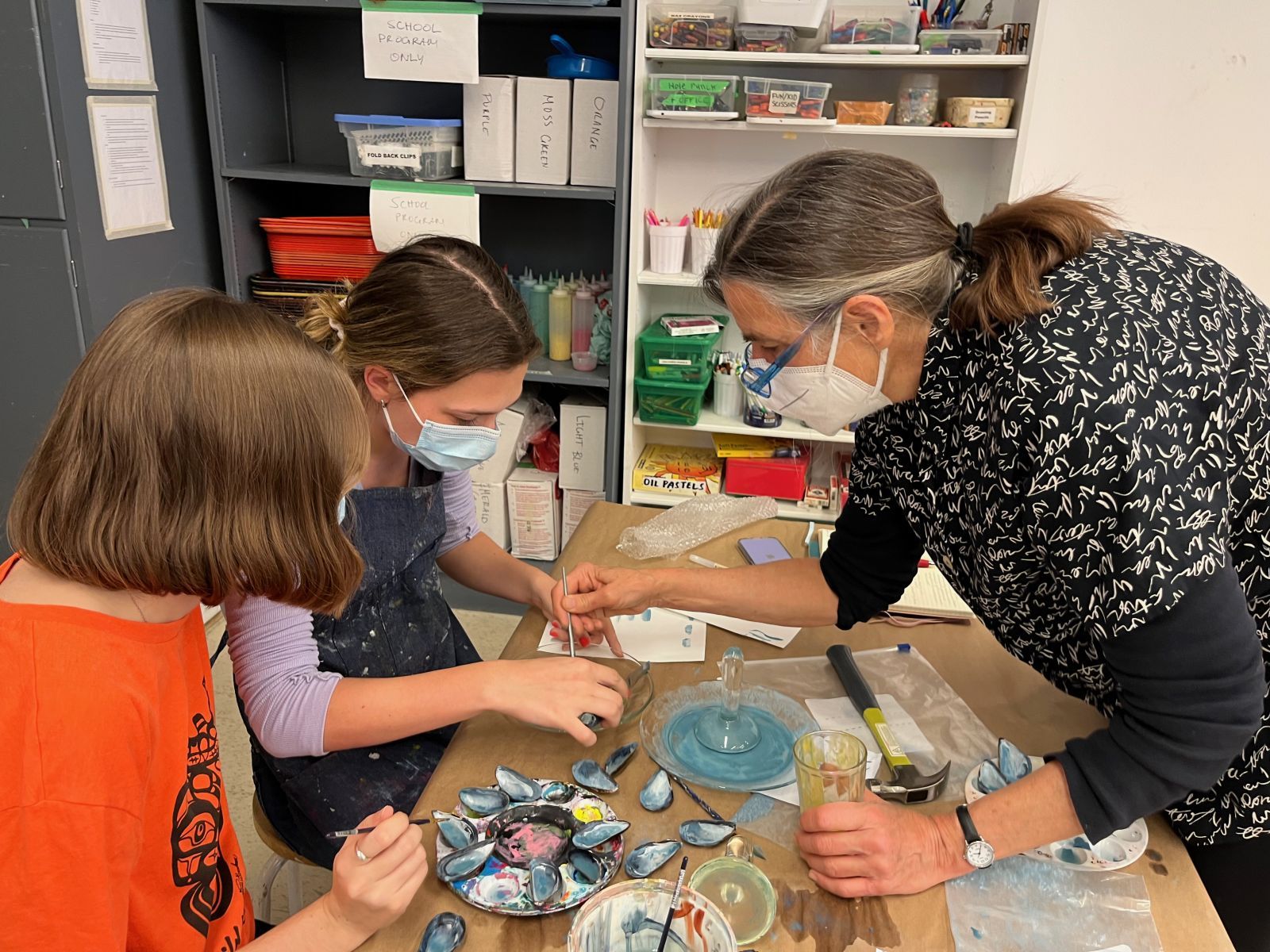
Sara Shields-Rivard, PhD student Art History (left, orange shirt) and Hailey Chomos, MA student Art History (middle, wearing a denim apron) work with Professor Smith.
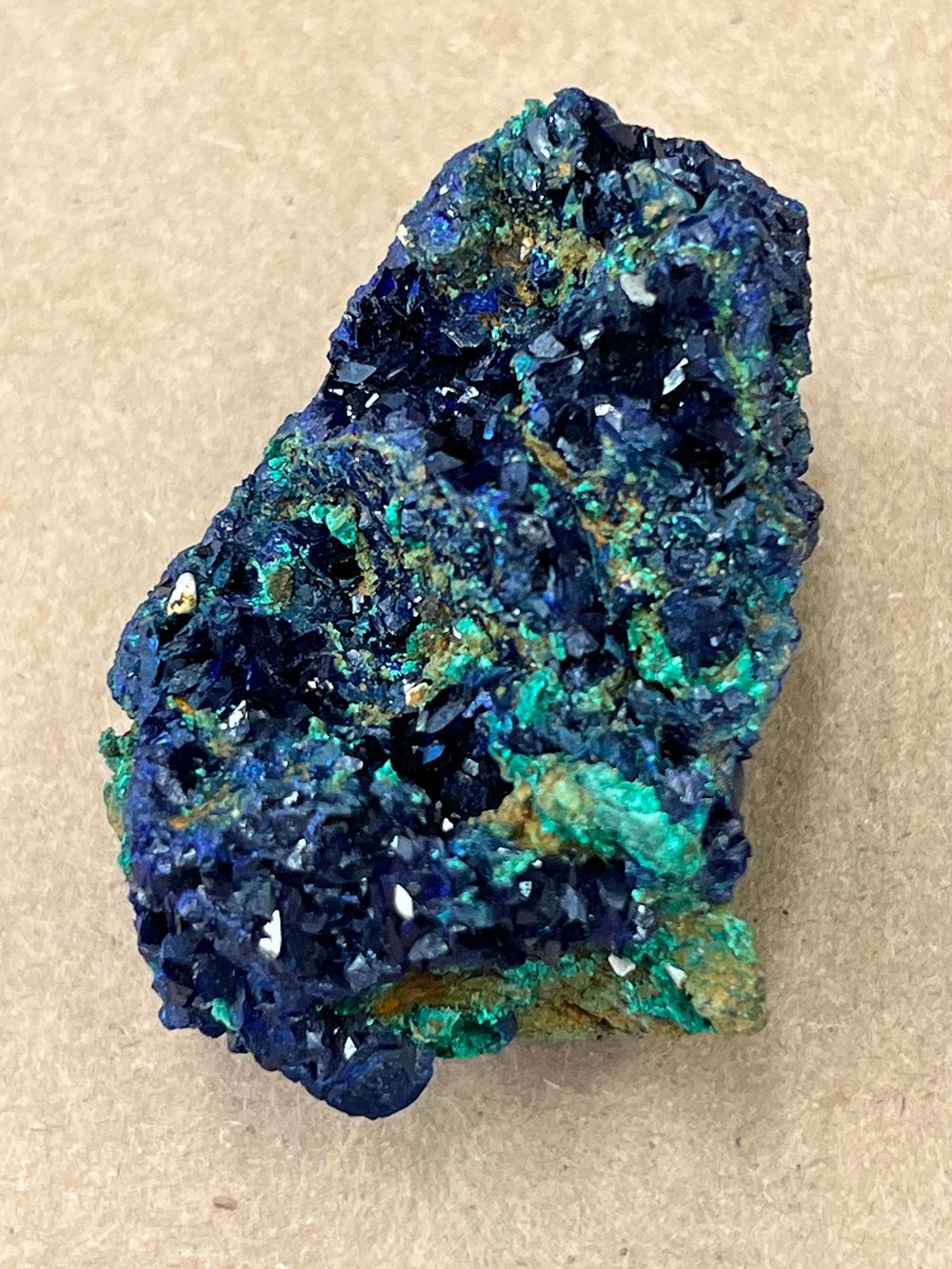
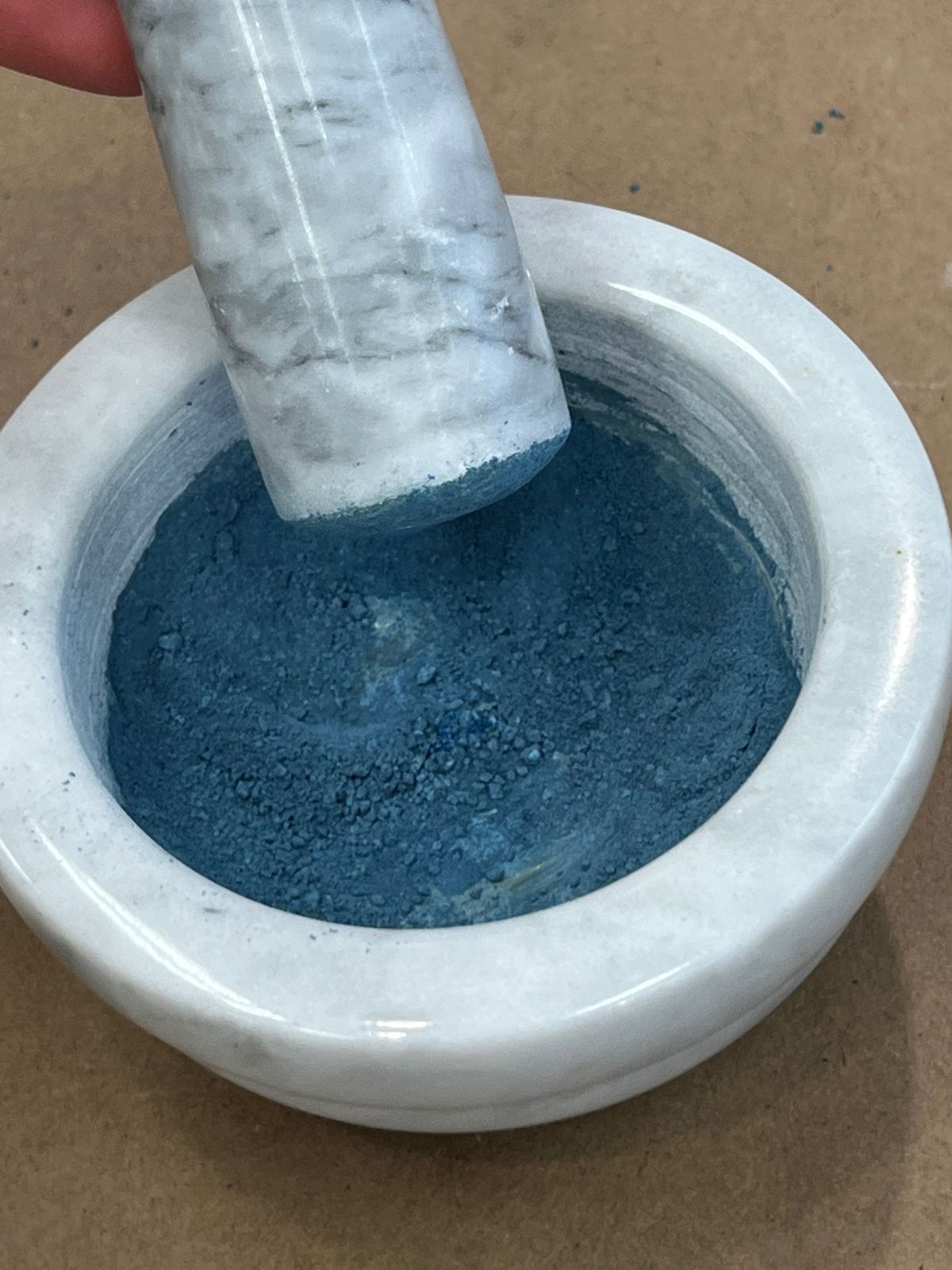
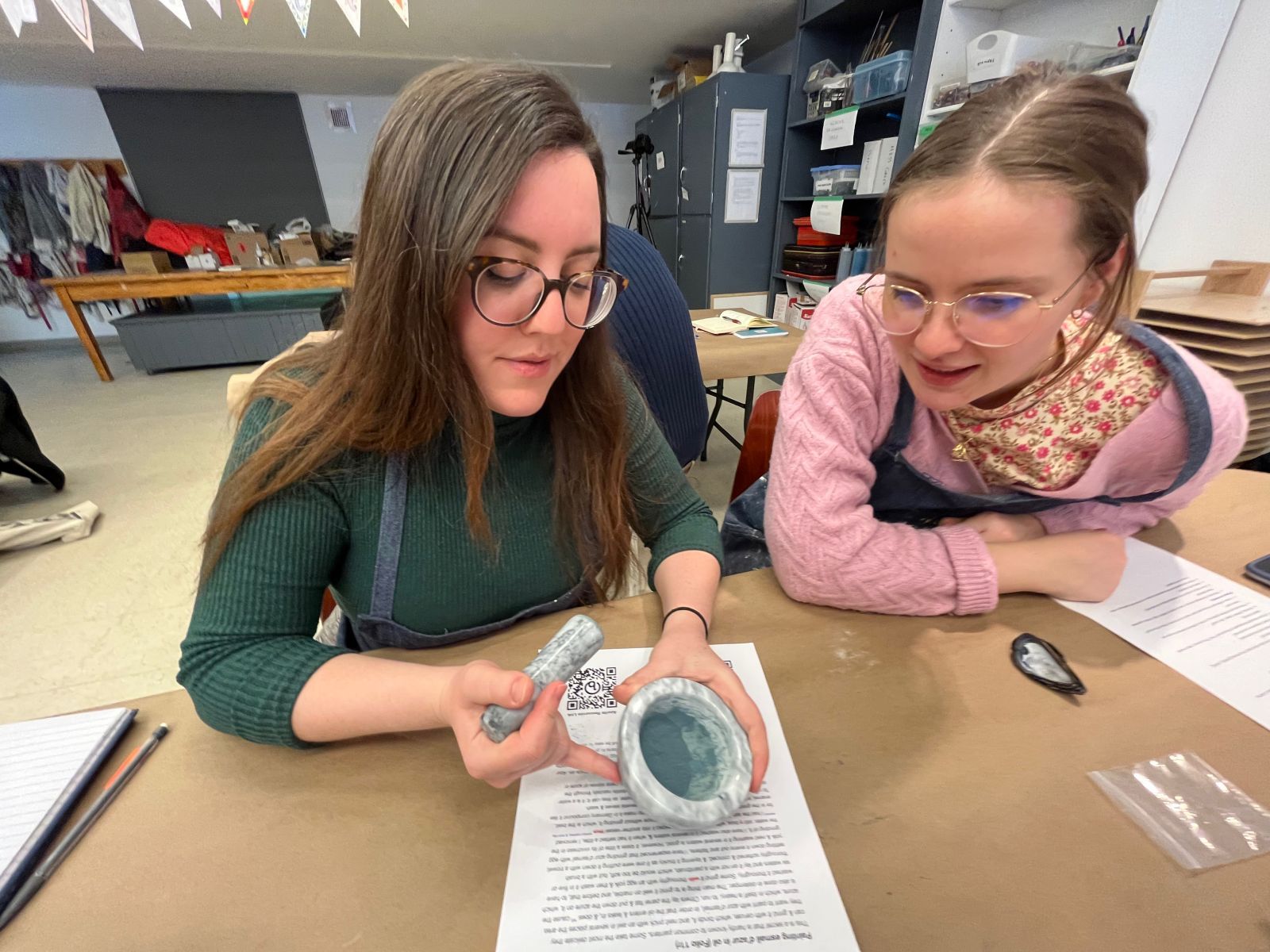
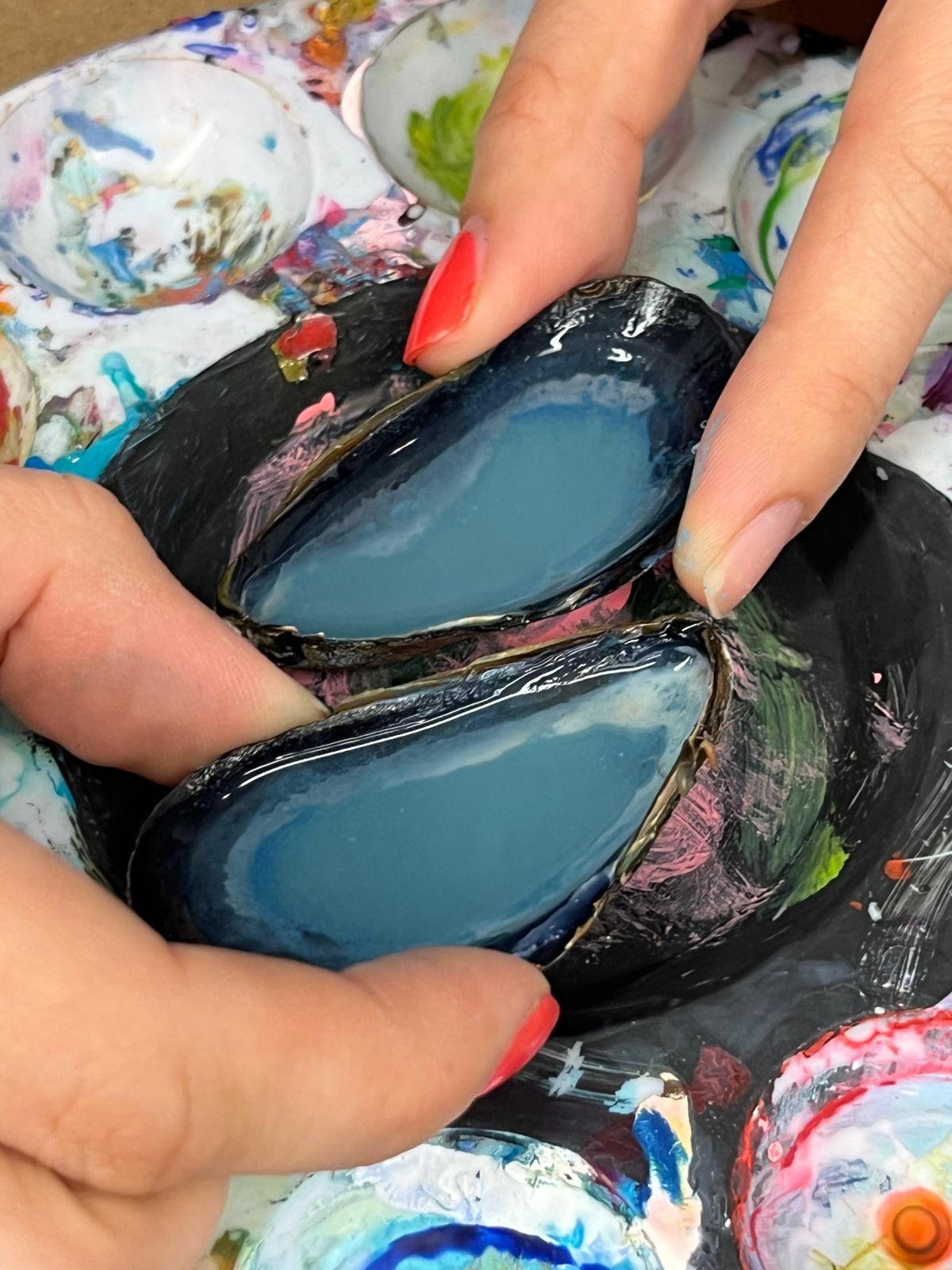

A brush with the past
Pamela H. Smith, Seth Low Professor of History and Director of the Center for Science and Society at Columbia University recently visited the Faculty of Arts and Science to conduct a hands-on workshop with graduate students from Art History and Art Conservation.
Dr. Smith is a world-renowned professor of the history of science at Columbia University who is at the forefront of experimental archeology through her work as founding director of the Making and Knowing Project, an interdisciplinary project involving professors, practitioners, and students in a variety of fields.
The Making and Knowing Project focuses on an extraordinary 16th century manuscript that includes recipes for everything from baking bread to how to cast an actual lizard in silver. In the project, in addition to studying and translating the manuscript, groups of students tried out the recipes, to see what the physical experience of making could teach them about the past.
“One of the great strengths of the Department of Art History and Art Conservation is our hands-on engagement with objects from around the world, and many of our faculty and students are excited about research into materials and techniques that involve physical experimentation, sometimes called experimental archeology,” says Una D’Elia (Art History).
During the workshop, the participants followed a sixteenth-century recipe for making blue pigment: they took chunks of azurite, observed them, smashed them with hammers, ground them in a mortar and pestle, ground them further with some water using a glass muller, and then completed a process called levigation. Levigation is a process of removing impurities by adding water to the pigment in a mussel shell, allowing the purer blue to settle to the bottom, and pouring off other substances that float to the surface. This process is repeated, pouring from one mussel shell to another, until a brilliant blue appears out of what had been a grey sludge.
Early modern artisans used commonly available materials like mussel shells as tools, so the workshop participants tried to use historically appropriate tools and methods as well.
“Faculty and students in Art History, Art Conservation, and the Bachelor of Fine Arts program are used to incorporating hands-on work into their studies, and we were excited to introduce these research methods to History students as well,” says Antonia Behan (Art History).
At the end of the workshop, Professor Smith asked the participants to talk about what they had learned from the experience. Professor D’Elia said it was exciting to hear from a variety of perspectives including Art History, History, Art Conservation, and studio art.
“Many students commented on the labour and skill involved to make a single pigment,” she added. “Some spoke about the multi-sensory nature of the experience, how you could tell if the pigment was ready not only by sight but also by touch and even the sound it made when being ground. They were fascinated by the combination of art and science and how the making of art was really an experimental science. It really helped all participants get a sense of complex processes and multiple people who contribute to the creation of one work of art.”
Learn more about the workshop on the Department of Art History & Art Conservation website.

